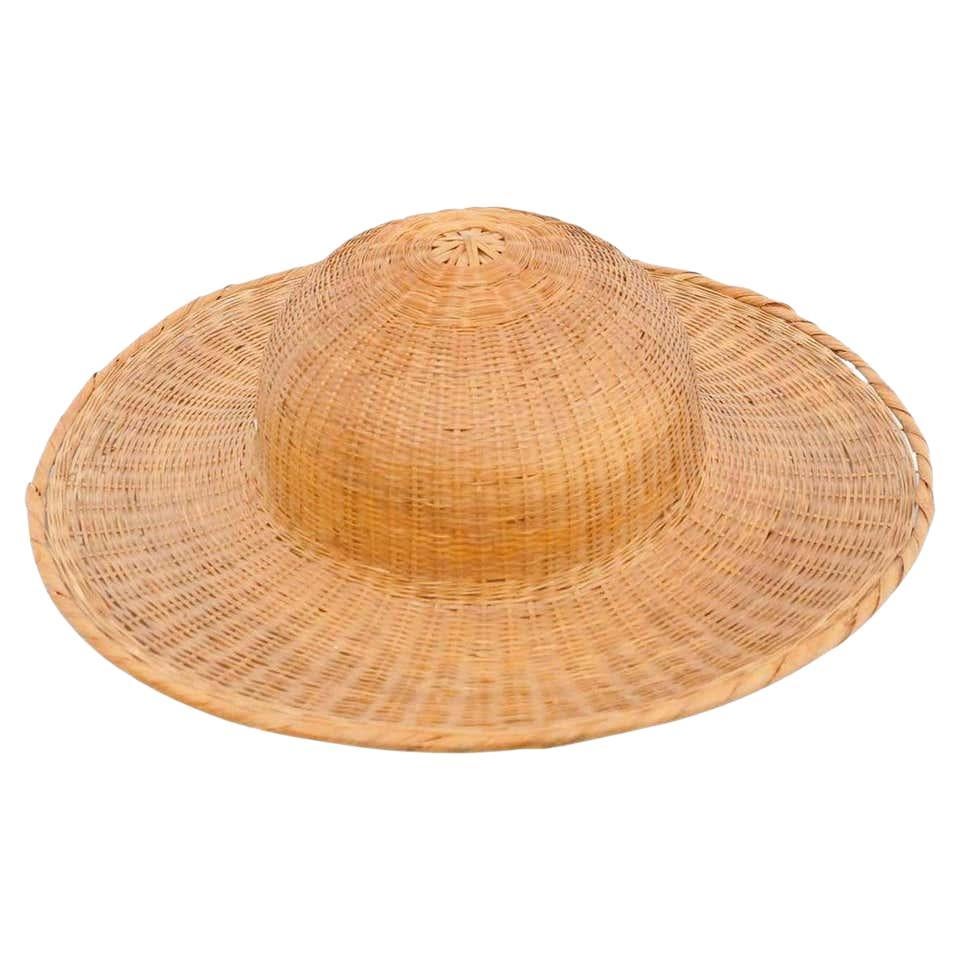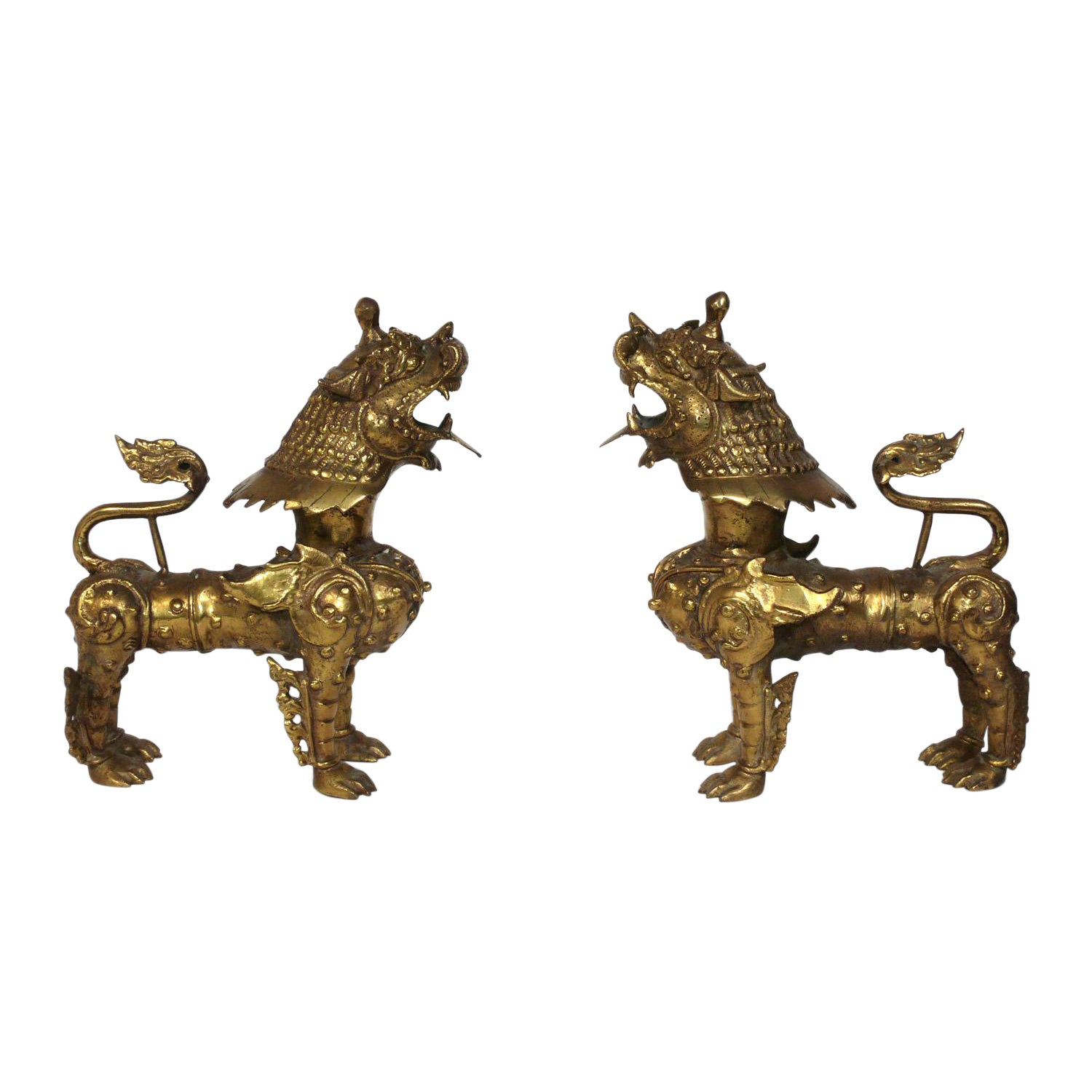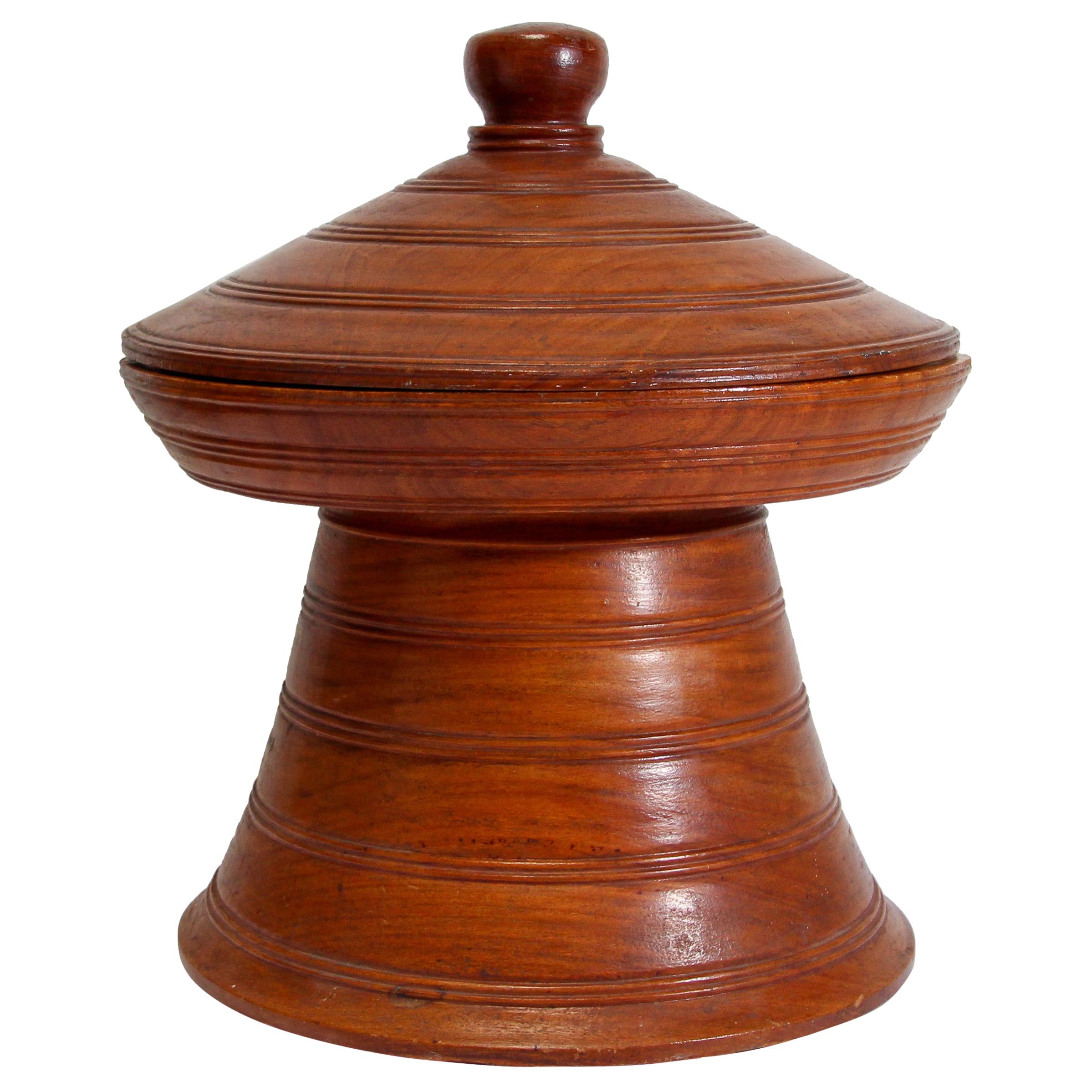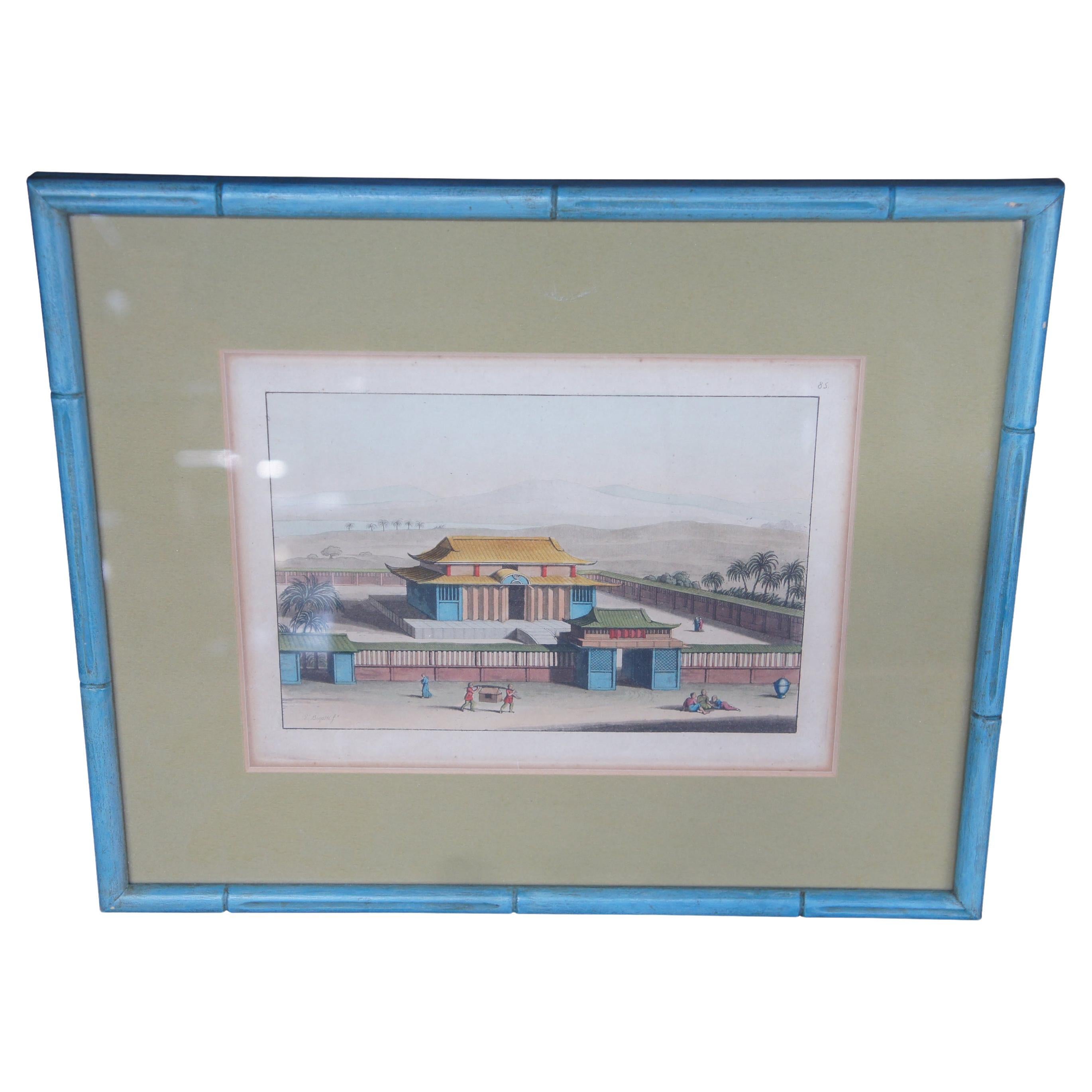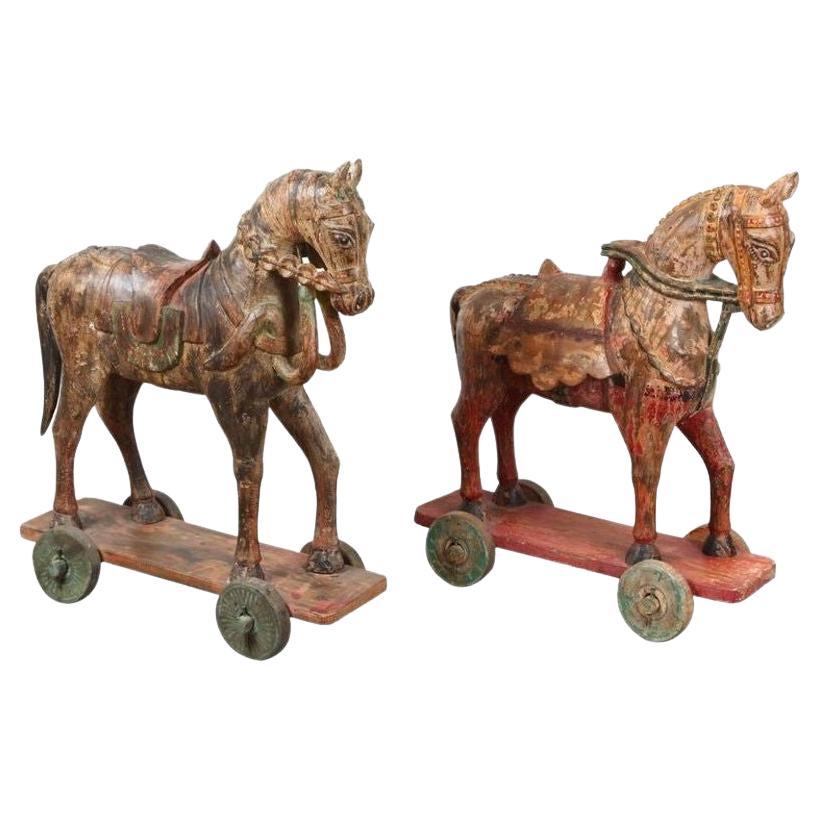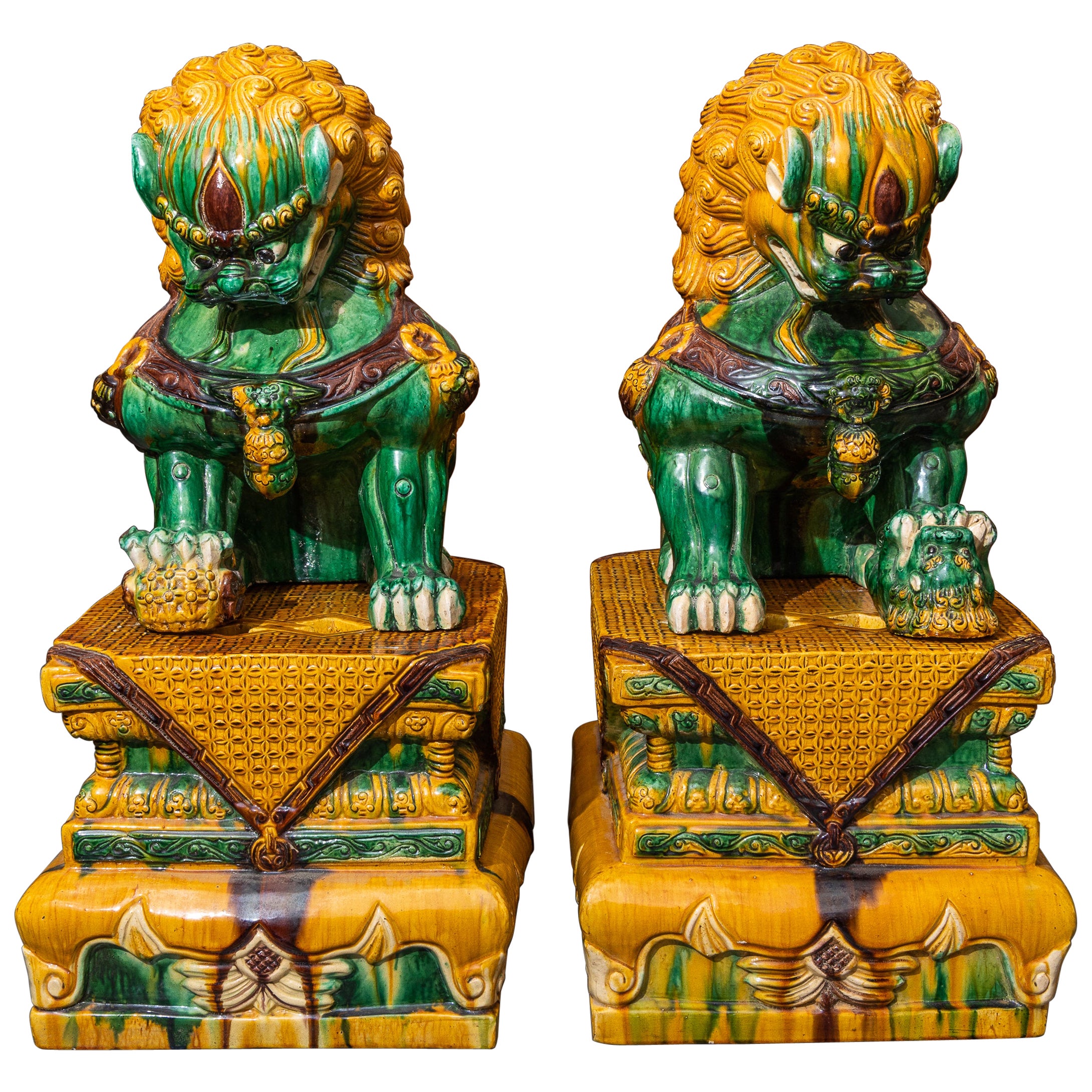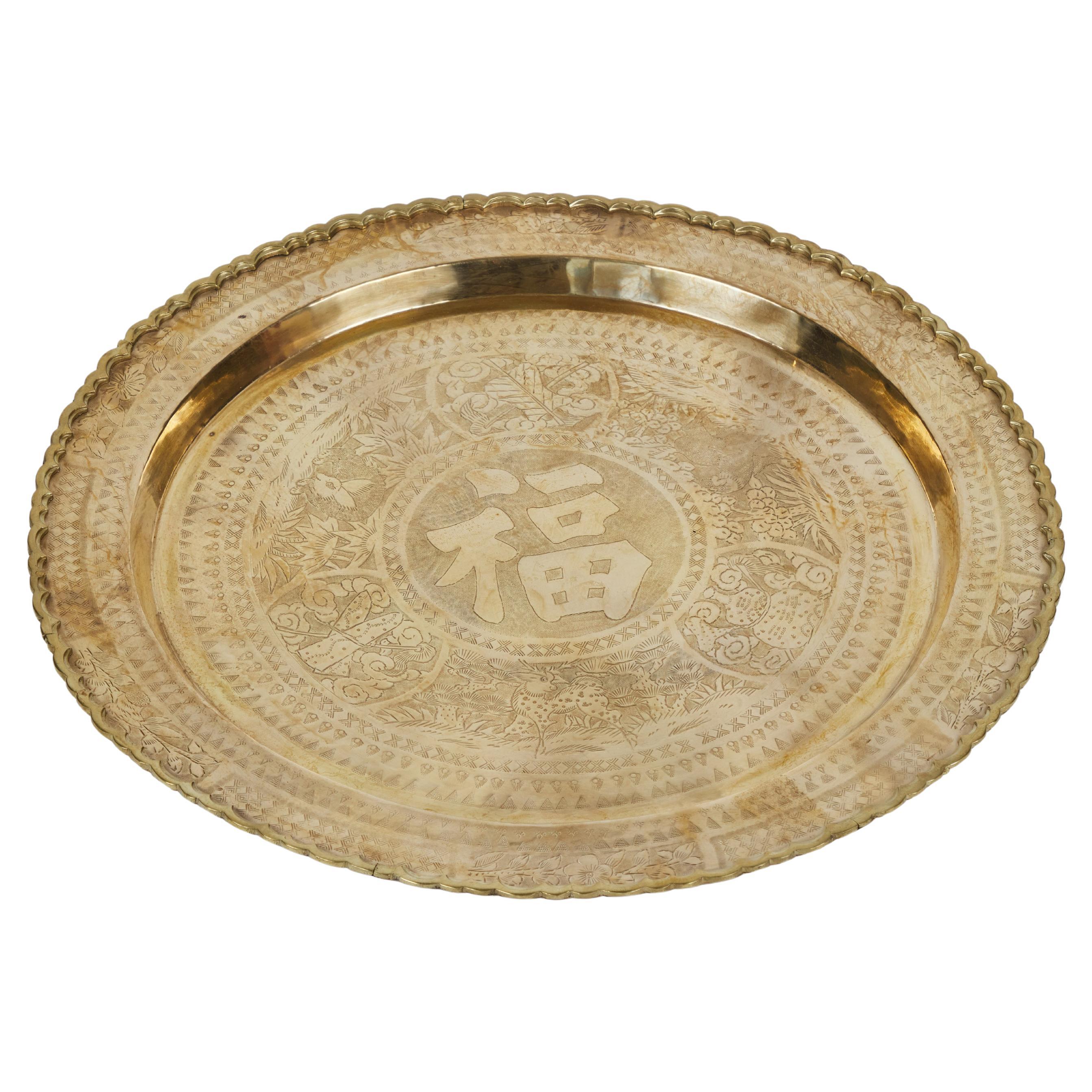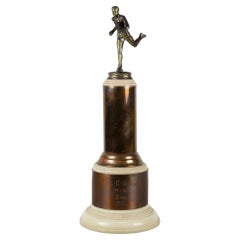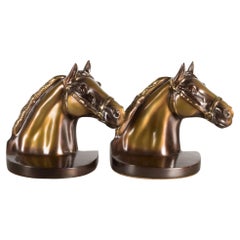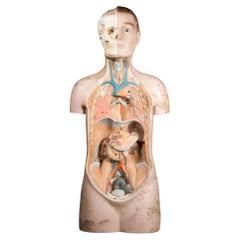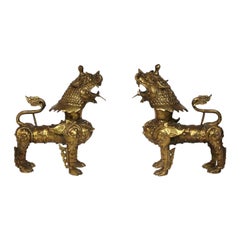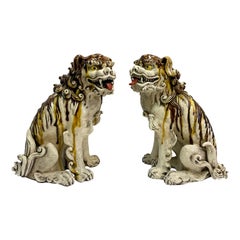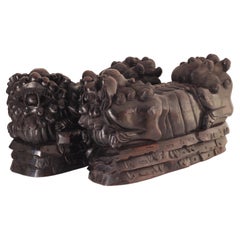
Pair of SE Asian Brass Temple Dogs, circa 1950-1970
View Similar Items
Want more images or videos?
Request additional images or videos from the seller
1 of 13
Pair of SE Asian Brass Temple Dogs, circa 1950-1970
About the Item
- Dimensions:Height: 8 in (20.32 cm)Width: 8.25 in (20.96 cm)Depth: 4.5 in (11.43 cm)
- Materials and Techniques:
- Place of Origin:Cambodia
- Period:
- Date of Manufacture:1950-1970
- Condition:Wear consistent with age and use.
- Seller Location:San Francisco, CA
- Reference Number:1stDibs: LU1280217629912
About the Seller
5.0
Platinum Seller
These expertly vetted sellers are 1stDibs' most experienced sellers and are rated highest by our customers.
Established in 2014
1stDibs seller since 2015
1,145 sales on 1stDibs
Typical response time: 1 hour
More From This SellerView All
- Vintage Brass Track Trophy with Bakelite Base, circa 1950 (FREE SHIPPING)Located in San Francisco, CAABOUT An original brass plated track trophy with a Bakelite base. Engraved solid brass sleeve. CREATOR Nobel Trophies for Champions. DATE OF MANUFACTURE circa 1950. MATERI...Category
Mid-20th Century Industrial Sports Equipment and Memorabilia
MaterialsBrass
$116 Sale Price20% Off - Mid-Century PMC Brass Horse Bookends. C.1970 (FREE SHIPPING)By Philadelphia Manufacturing CompanyLocated in San Francisco, CAA pair of brass plated brass horse bookends. Original felt and lables. Made by Philadelphia Manufacturing Co. (PMC) Good condition: no chips.Category
Mid-20th Century American Industrial Bookends
MaterialsBrass
- Midcentury French Anatomical Medical Teaching Display, circa 1950Located in San Francisco, CAAbout A midcentury French anatomical medical teaching device of the human body. The organs and muscles are numbered and the skull has Roman numerals. One glass eye. The piece has re...Category
Mid-20th Century Mid-Century Modern Models and Miniatures
MaterialsPlastic, Wood
$525 Sale Price38% Off - Distressed Leather Suitcase with Brass Locks, circa 1940Located in San Francisco, CAAbout A distressed leather suitcase with leather handle, fabric interior and brass locks. Key is missing. Creator: Unknown. Date of manufacture: circa 1940. Materials and technique...Category
Early 20th Century Industrial Trunks and Luggage
MaterialsBrass
$95 Sale Price56% Off - Mid-20th Century Carved Wooden Santo, circa 1950-1960Located in San Francisco, CAAbout A hand painted carved wooden Mexican or Central American Santo (saint) with articulating arms. Creator unknown. Date of manufacture circa 1...Category
Antique 19th Century Mexican Industrial Figurative Sculptures
MaterialsWood, Paint
- Hand Carved Mexican Folk Art Archangel, circa 1940-1970 (FREE SHIPPING)Located in San Francisco, CAAbout Hand carved, painted Mexican wooden folk art archangel on custom stand. Creator Unknown. Mexico. Date of manufacture circa 1940-1970. Materials and techniques paint, w...Category
Early 20th Century Mexican Folk Art Figurative Sculptures
MaterialsWood, Paint
$275 Sale Price43% Off
You May Also Like
- Asian Bronze Foo DogsLocated in Atlanta, GAPair of Asian Bronze Foo Dogs or Kylin Dragon, probably Tibetan, circa 1940s or earlier. They retain their warm original patina. These were purchased f...Category
Vintage 1940s Tibetan Chinoiserie Sculptures and Carvings
MaterialsBronze
$1,800 / set - 1970s Asian Chinese Export Fierce Facing Drip Glaze Pottery Foo Dogs, PairLocated in Kennesaw, GAThese are a personal favorite! This is a killer pair of 1970s large scale Chinese Export style foo dogs. I love the coloration with the brown and gold drip g...Category
Late 20th Century Chinese Chinese Export Pottery
MaterialsCeramic, Pottery
- A pair of 19th Century carved Foo temple dogs or Chinese guardian LionsLocated in London, GBChinese guardian lions, or imperial guardian lions, are a traditional Chinese architectural ornament. Typically made of stone, they are also known as stone lions or shishi (石獅; shíshī). They are known in colloquial English as lion dogs or foo dogs / fu dogs. The concept, which originated and became popular in Chinese Buddhism, features a pair of highly stylized lions—often one male with a ball and one female with a cub—which were thought to protect the building from harmful spiritual influences and harmful people that might be a threat. Used in imperial Chinese palaces and tombs, the lions subsequently spread to other parts of Asia including Japan (see komainu), Korea, Philippines, Tibet, Thailand, Myanmar, Vietnam, Sri Lanka, Nepal, Cambodia, Laos, and Malaysia. There has been extensive interaction between Chinese mythology and Confucianism, Taoism, and Buddhism. Elements of pre-Han dynasty mythology such as those in Classic of Mountains and Seas were adapted into these belief systems as they developed (in the case of Taoism), or were assimilated into Chinese culture (in the case of Buddhism). Elements from the teachings and beliefs of these systems became incorporated into Chinese mythology. For example, the Taoist belief of a spiritual Paradise became incorporated into mythology as the place where immortals and deities used to dwell. Sometimes mythological and religious ideas have become widespread across China's many regions and diverse ethnic societies. In other cases, beliefs are more limited to certain social groups, for example, the veneration of white stones by the Qiang. One mythological theme that has a long history and many variations involves a shamanic world view, for example in the cases of Mongolian shamanism among the Mongols, Hmong shamanism among the Miao people, and the shamanic beliefs of the Qing dynasty from 1643 to 1912, derived from the Manchus. Politically, mythology was often used to legitimize the dynasties of China, with the founding house of a dynasty claiming a divine descent. Mythology and philosophy. Further information: Chinese philosophy True mythology is distinguished from philosophical treatises and theories. Elaborations on the Wu Xing are not really part of mythology, although belief in five elements could appear. The Hundred Schools of Thought is a phrase suggesting the diversity of philosophical thought that developed during the Warring States of China. Then, and subsequently, philosophical movements had a complicated relationship with mythology. However, as far as they influence or are influenced by mythology, divides the philosophical camps into two rough halves, a Liberal group and a Conservative group. The liberal group being associated with the idea of individuality and change, for example as seen in the mythology of divination in China, such as the mythology of the dragon horse that delivered the eight bagua diagrams to Fu Xi, and methods of individual empowerment as seen in the Yi Jing (Book of Changes). The Liberal tendency is towards individual freedom, Daoism, and Nature. The relationship of the Conservative philosophies to mythology is seen in the legendary Nine Tripod Cauldrons, mythology about the emperors and central bureaucratic governance, Confucianism, written histories, ceremonial observances, subordination of the individual to the social groups of family and state, and a fixation on stability and enduring institutions. The distinction between the Liberal and Conservative is very general, but important in Chinese thought. Contradictions can be found in the details, however these are often traditional, such as the embrace by Confucius of the philosophical aspects of the Yi Jing, and the back-and-forth about the Mandate of Heaven wherein one dynasty ends and another begins based according to accounts (some of heavily mythological) where the Way of Heaven results in change, but then a new ethical stable dynasty becomes established. Examples of this include the stories of Yi Yin, Tang of Shang and Jie of Xia or the similar fantastic stories around Duke of Zhou and King Zhou of Shang. Mythology exists in relationship with other aspects of society and culture, such as ritual. Various rituals are explained by mythology. For example, the ritual burning of mortuary banknotes (Hell Money), lighting fireworks, and so on. A good example of the relationship of Chinese mythology and ritual is the Yubu, also known as the Steps or Paces of Yu. During the course of his activities in controlling the Great Flood, Yu was supposed to have so fatigued himself that he lost all the hair from his legs and developed a serious limp. Daoist practitioners sometimes incorporate a curiously choreographed pedal locomotion into various rituals. Mythology and practice, one explains the other: in these rituals, the sacred time of Yu merges with the sacral practice of the present. Various ideas about the nature of the earth, the universe, and their relationship to each other have historically existed as either a background or a focus of mythologies. One typical view is of a square earth separated from a round sky by sky pillars (mountains, trees, or undefined). Above the sky is the realm of Heaven, often viewed of as a vast area, with many inhabitants. Often the heavenly inhabitants are thought to be of an "as above so below" nature, their lives and social arrangements being parallel to those on earth, with a hierarchical government run by a supreme emperor, many palaces and lesser dwellings, a vast bureaucracy of many functions, clerks, guards, and servants. Below was a vast under ground land, also known as Diyu, Yellow Springs, Hell, and other terms. As time progressed, the idea of an underground land in which the souls of the departed were punished for their misdeeds during life became explicit, related to developments in Daoism and Buddhism. The underground world also came to be conceived of as inhabited by a vast bureaucracy, with kings, judges, torturers, conductors of souls, minor bureaucrats, recording secretaries, similar to the structure of society in the Middle Kingdom (earthly China). Chinese temple Dogs...Category
Antique 1860s Chinese Chinese Export Sculptures and Carvings
MaterialsHardwood
- Antique Asian Rattan Hat, circa 1950Located in Barcelona, BarcelonaAsian Hat, circa 1950. By unknown manufacturer, from Asia. In original condition, with some visible signs of previous use and age, preserving a beautiful pat...Category
Vintage 1950s Asian Mid-Century Modern More Asian Art, Objects and Furni...
MaterialsRattan
- Antique Asian Rattan Hat, circa 1950Located in Barcelona, BarcelonaAsian hat, circa 1950. By unknown manufacturer, from Asia. In original condition, with some visible signs of previous use and age, preserving a beautiful ...Category
Vintage 1950s Asian Mid-Century Modern More Asian Art, Objects and Furni...
MaterialsRattan
- Antique Large Pair of Porcelain Polychrome Foo Dogs, Chinese, circa 1900Located in Torino, ITFine large pair of polychrome glazed "Famille Jaune et Verte" porcelain foo dogs, one female with pup the other male with front paw resting on pierced ball, decorated in overglaze en...Category
Early 20th Century Chinese Ceramics
MaterialsPorcelain
Recently Viewed
View AllMore Ways To Browse
Japanese Mingei
Japanese Wabisabi
Old Japanese Cedar
Antique 1920s Japanese
Japanese Edo Period Items
Antique Opium
Chinese Wood Carving Panel
Opium Antique
Japanese Antique Store
Antique Asian Folk Art
Japanese Old Wooden Box
Antique Wabisabi
Wood Carved Lattice
Japanese Antique Shop
Japanese Antique Shops
Antique Japanese Storage Box
Qing Metal
Figurines Japan
